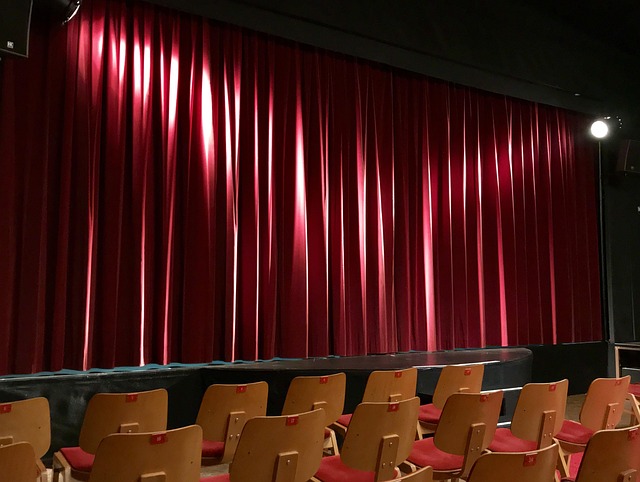
Frustration in Reading Finding Leisure and Free Time
In the quiet corners of many homes, a pile of books sits untouched, the pages whispering stories that never seem to start. The feeling that grips the reader is not a simple boredom; it is a layered frustration that arises from expectations, environment, and the ever‑present lure of instant entertainment. Understanding this frustration is the first step toward reclaiming leisure and making free time a source of genuine pleasure rather than a battleground of unfinished chapters.
The Roots of Reading Frustration
When we talk about frustration in reading, we are usually addressing a confluence of psychological and practical factors. Each one can tip the balance from enthusiasm to exasperation:
- Expectations vs. Reality – The promise of a thrilling plot or profound insight can set a standard that the text fails to meet, leading to disappointment.
- Attention Economy – Constant notifications, social media feeds, and streaming services compete for the same precious hours that could otherwise be spent on a book.
- Reading Environment – Poor lighting, uncomfortable seating, or background noise can make even the most engaging narrative feel taxing.
- Time Constraints – A busy schedule may leave little room for slow, thoughtful reading, causing readers to rush and miss context.
- Personal Skill Level – A mismatch between the reader’s comprehension abilities and the complexity of the text can generate frustration and a sense of inadequacy.
When these elements collide, the act of reading shifts from a leisurely escape to a source of tension, and frustration takes center stage.
Recognizing the Frustration Signal
It is useful to pause and ask oneself: am I reading because I want to, or because I feel pressured to finish? The following signs often indicate an emerging frustration:
- Difficulty focusing for more than a few minutes.
- Skipping chapters or rereading small sections repeatedly.
- Feeling guilty or annoyed when the book remains partially read.
- Choosing a TV show or game over a novel at the last minute.
Identifying these cues early allows for a timely intervention that can turn frustration into a gateway for healthier leisure habits.
Turning Frustration into Strategy
Once the frustration is acknowledged, the next step is to devise a strategy that respects the reader’s natural rhythms and life constraints. Here are evidence‑based approaches that can help:
- Set Realistic Goals – Rather than committing to finish a novel in a day, aim for a certain number of pages or a fixed reading time each day.
- Create a Dedicated Space – A calm, well‑lit area free from digital distractions establishes a psychological cue for reading.
- Use the Pomodoro Technique – Read for 25 minutes, then take a 5‑minute break. This cycle reduces mental fatigue.
- Leverage Audiobooks – Pairing an audiobook with a physical book can help maintain engagement while walking or commuting.
- Switch Genres Strategically – Alternating between fiction, nonfiction, and light reads can prevent burnout.
By integrating these tactics, the frustration that once halted progress can be transformed into a manageable part of a balanced routine.
Leisure Activities That Complement Reading
Reading is just one facet of leisure. Engaging in varied activities can not only relieve frustration but also enrich the reading experience itself. Consider the following:
- Creative Writing – Keeping a journal or short story notes encourages a deeper connection with narrative structures.
- Discussion Groups – Joining a book club or online forum can provide motivation and new perspectives.
- Mindfulness Practices – Meditation or simple breathing exercises before reading help calm the mind.
- Physical Exercise – A brisk walk or light workout can refresh the brain, making subsequent reading easier.
- Exploratory Travel – Even a short local excursion can spark curiosity, enriching the context for reading themes.
When these activities are interwoven into a weekly schedule, the overall sense of leisure deepens, and frustration is naturally diluted.
Planning Free Time: A Blueprint
Free time is a finite resource, and its allocation should reflect personal values and goals. Below is a sample weekly plan that balances reading with other leisure pursuits, minimizing frustration and maximizing satisfaction:
- Monday – 30 minutes of reading, followed by a 20‑minute walk.
- Tuesday – Attend a local art exhibit or an online lecture.
- Wednesday – 45 minutes of creative writing, then a short meditation.
- Thursday – 30 minutes of a favorite podcast, then a group discussion about a recent book.
- Friday – 60 minutes of reading in a dedicated space, complemented by a light snack.
- Saturday – Outdoor activity (hiking, cycling) followed by reflection journaling.
- Sunday – Rest day: minimal screen time, optional light reading, focus on relaxation.
Adapting this template to one’s own lifestyle can help maintain a steady rhythm that keeps frustration at bay while fostering a sense of accomplishment and pleasure.
Tracking Progress and Adjusting
Regular reflection is a powerful tool for maintaining a healthy balance. At the end of each week, answer these simple questions:
- Did I stick to my reading goals?
- What other activities did I enjoy, and how did they influence my reading mood?
- Did I feel any frustration, and if so, what triggered it?
- What adjustments can I make to reduce frustration next week?
Keeping a brief log, whether in a notebook or a digital note, creates accountability and a feedback loop that refines the leisure plan over time.
Conclusion: From Frustration to Freedom
Frustration in reading is not a sign of failure; it is a natural response to a complex mix of expectations, external pressures, and personal rhythms. By recognizing the sources of frustration, employing targeted strategies, and integrating diverse leisure activities, one can transform the experience of reading from a source of tension into a catalyst for enjoyment.
Free time becomes a canvas on which multiple forms of enrichment can coexist—reading, writing, exercising, and connecting with others. When the canvas is thoughtfully curated, frustration fades into a distant memory, replaced by a sense of freedom and purpose that permeates every part of daily life.


